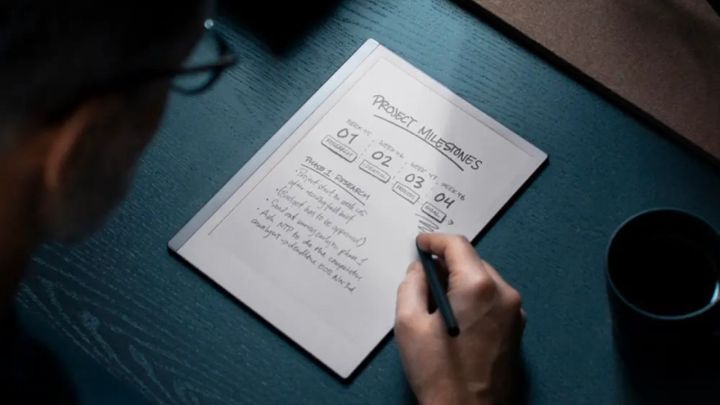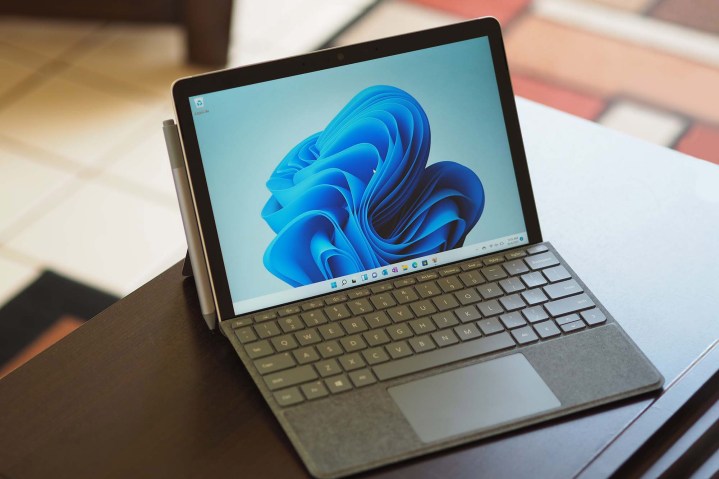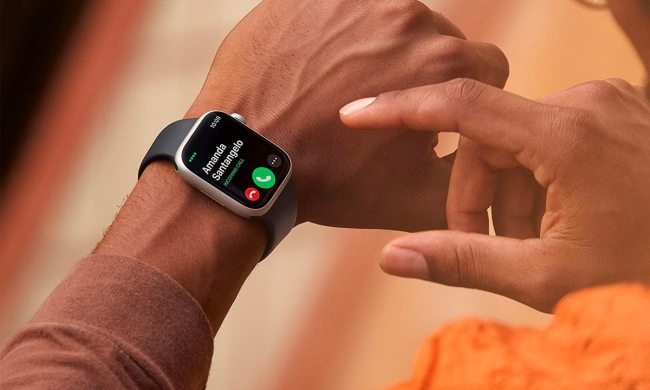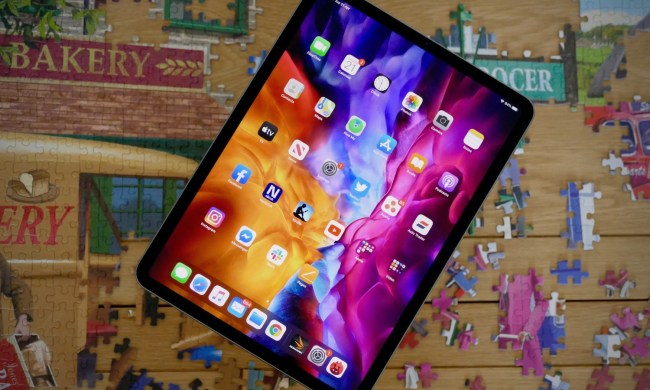These days, there are tablets for just about any pursuit you want one for. You can find a great tablet for watching movies as an alternative to a TV. Likewise, you can find a great tablet for playing Roblox as an alternative to a laptop. But, in many ways, these are all alternatives for something better out there. This is not necessarily so with drawing, or at least digital drawing. The non-bulky format mimics paper in many ways, or at least a spiral notebook, as tablets are thin and relatively easy to move about.
Here, we’re taking a look at tablets that are considered the best for drawing, examining their hardware, and working to give you a sense of what you can do with them. We’ll pay special attention to their pens and styluses, as well, since that will be your gateway into the drawing world while using them. Here, we’ll explore several brands, power levels, and more.
The best tablets for drawing in 2024
- Buy the for a great tablet that works well with drawing.
- Buy the for an artist’s drawing tablet.
- Buy the for a smart notebook with an ultra slim feel.
- Buy the if you like to doodle in book margins and add sketches to your digital journal.
- Buy the for a great budget doodler.
Apple iPad Pro 6
Best tablet you can draw on

| Pros | Cons |
| Vivid, gorgeous Liquid Retina display | Apple Pencil sold separately |
| High performance from M2 chip | |
| Apple Pencil hover feature |
If you want one of the best overall tablets, that also comes with great drawing capacity, check out the 2022 version of the Apple iPad Pro. As a general tablet, it is favored for its power and picture. The screen utilizes Apple’s Liquid Retina XDR display, which has 1600 nits of peak brightness and access to both True Tone colors and the P3 wide color gamut. Furthermore, there is an anti-reflective coating on the screen, giving you the chance to draw anywhere you want. If you want to draw from real life references, you can eyeball it like always, or use the 12MP ultra wide front camera to take a picture to draw over directly.
When we made our Apple iPad Pro 6 review, we took a moment or two to discuss the M2 chip in the iPad Pro. This powerful chip, the same one used in the same year’s MacBook Air and MacBook Pro, makes the iPad like an even more portable laptop in some respects. However, there is one part of the review that deserves to be quoted directly: “Not once have I been able to slow down or trip up the iPad Pro (2022), and paired with the 120Hz ProMotion screen, everything I do always feels instantaneous.” For an art tool and replacement for paper and canvas, this means everything. Small hang-ups and lag spikes of even half a second can be incredibly annoying and immersion breaking for finely tuned tasks. Unless something goes horribly wrong, you shouldn’t be expecting them with the iPad Pro.
A possible letdown that we must warn you about is the fact that the iPad Pro does not come with an Apple Pencil. In this case, you’ll probably want the Apple Pencil 2, which is one of the most convenient styluses around. It uses magnetic charging, so — while conveniently stuck to the side of your iPad — it can charge while at rest and with no extra input from you. The Apple Pencil 2 is slightly thicker than a standard pencil and has flat edges, giving you a comfortable grip and fine control over your motions. Its defining feature is how it can be detected up to 12mm away from the screen surface, allowing for special modes and color mixing previews. Also, note that we said you’ll probably want the Apple Pencil 2, as you may also enjoy one of the many Apple Pencil alternatives for your iPad Pro.
| Key Specifications | |
| Display | 12.9-inches, 2732 x 2048p at 120Hz |
| Storage | 128GB – 2T |
| Battery life | 10 hours |
Wacom Cintiq Pro 16
Best for professionals

| Pros | Cons |
| Recognizes 8,192 pen pressures | Must be connected to PC |
| Nice tilt recognition on Wacom Pro Pen 2 | |
| Delightful etched glass screen |
Professional computer artists already know the name Wacom, known for the tablets back in the day that would allow you to draw and paint on them, moving the image to the computer. For many, the system worked wonderfully, but many would also find it an awkward experience. You’d be drawing on the Wacom tablet, but the image would be popping up on your monitor. Nowadays, the company has drawing tablets that give you onscreen, under-the-pen feedback. You’ll also be able to use touchscreen commands or the 8 ExpressKey buttons on the Wacom Pro Pen 2 to control your working environment, with less need to pick up your mouse and make adjustments.
Drawing and painting on the Wacom Cintiq Pro 16 should be very delightful and has a level of realness to it that is not matched by many tablets. Pressing the Wacom Pro Pen 2 into the screen lightly intuitively makes lighter marks. Similarly, pen tilt is recognized and accounted for. A firm stab directly at the center of the screen will be recognized as different than a light, angled attempt at shading. You can see more of our hands-on experience with the pen in our Wacom Cintiq 16 review (same pen, different product).
Notice that we mentioned a mouse earlier in the writeup. That’s because the Wacom Cintiq Pro 16 is, technically speaking, a monitor. It needs to be with your Windows computer or Macbook to run. At the same time, it still fits here, as it is most certainly a tablet, it just happens to be much less portable than other tablets on the list.
| Key Specifications | |
| Display | 15.6 inches, 4K |
| Storage | N/A |
| Battery life | N/A |
reMarkable 2
Best thin notebook

| Pros | Cons |
| Ultra thin body | Limited internal storage |
| Comes with intuitive Marker Plus | Not colorful |
| Live screen sharing option |
One of the hardest parts about moving from paper to tablet is how thick tablets can be. While the manufacturer’s declaration that the reMarkable 2 is “paper-thin” is somewhat of an exaggeration, in practice you’ll hardly notice the difference. At just 0.19 inches thick, you’ll be hard pressed to find any tablet thinner. We also love the reMarkable 2’s design philosophy and how it likes to work with you. The screen is anti-glare, but also not backlit. Not only does this help it mimic real paper, but it also contributes to the tablet’s low-energy design and unbelievable two week battery life. Other design features include no popups and live screen sharing so you can show people your artistic process easily.
There’s equally a lot to love about the Marker Plus, the reMarkable 2’s stylus. For one, it is included in the bundle and even comes with nine spare marker tips so you can always use a fresh-feeling pencil. Plus, when you get it in your hands, it’ll feel a lot like using a regular pencil. Erasing is done easily by flipping the Marker Plus over and rubbing its “eraser” on the paper. It’s intuitive and it works.
What you may not like about the reMarkable 2 is its, relatively speaking, limited internal storage of just 8GB. Luckily, to mitigate this, cloud storage is easy and you even get one year of free cloud storage via Connect with your purchase of the reMarkable 2. It’s also worth noting that, as the reMarkable 2 is considered a smart notebook, it only features grayscale imagery. If either of these problems are big issues for you, but you like the overall idea of the machine, go check out our collection of reMarkable alternatives.
| Key Specifications | |
| Display | 10.3 inch, 226 ppi |
| Storage | 8 GB |
| Battery life | Two weeks |
Amazon Kindle Scribe
Best for journaling

| Pros | Cons |
| Comes with templates for everything from journaling to sheet music | Limited Kindle app integration |
| Two pen options | Grayscale only |
| Feels like writing on real paper |
It may come as a complete shock, but one of the best Kindles comes with a pen that magnetically sticks to its side. Well, one of two different pens, actually, as you can get either a ‘Basic Pen’ or ‘Premium Pen’ with your purchase, with the latter having a shortcut button for added control. Our Amazon Kindle Scribe review described the experience of using the pen on the Kindle as very paper-like, exhibiting extremely limited lag. Being a Kindle, you’re also writing using Kindle e-ink, which does mimic real ink in appearance to some degree. It’s the little touches like that add to the realism and make this device fun.
We especially like how easy it is to get moving, so you can start working right away. With a couple of taps of a button, you can pull up a new workspace. That can be lined pages for a journal, a totally blank canvas, or music bars for composing. Or, take inspiration from a novel scene and illustrate your thoughts with a handwritten note in the book.
Overall, despite some flaws, the Kindle Scribe is perfect for you if you’re the type that wants to get into e-journaling but don’t want to skip out on the fun doodles or benefits of handwriting out your life’s story. It won’t be for every artist, especially those wanting to create colorful scenes that take advantage of advanced brush effects. But, if you want to keep it simple and have something that lets you get started easily, this is a great tablet for you.
| Key Specifications | |
| Display | 10.2 inches, 300 ppi |
| Storage | 16GB – 64GB |
| Battery life | Weeks |
Microsoft Surface Go 3
Best budget

| Pros | Cons |
| Excellent build quality | Keyboard and pen sold separately |
| Small and light | |
| Great value for the money |
Tablets for drawing can get quite expensive. Fortunately, one of the best Windows tablets, the Microsoft Surface Go 3 is able to mitigate this with a small form factor and a prioritization on good build quality. Sporting a mid-pandemic release date, its also a somewhat older model, but everything still holds up to this day. Our Microsoft Surface Go 3 review will contain the typical acknowledgements of budget-tier equipment. However, by the end of the review period, our reviewer enjoyed taking notes on it — the small size makes it perfect to pull out and doodle on whenever you like. This doodling will be done of the Microsoft Surface Pen, which is sold separately. It works at a responsive 4,096 levels of pressure and has full tilt support. To keep the price of add-ons down, as this is a budget choice, we definitely recommend checking out Microsoft Surface deals to see if you can save on part of the purchase.
| Key Specifications | |
| Display | 10.5 inches, 1920 x 1280p |
| Storage | 64GB |
| Battery life | 11 hours |
How we chose these tablets for drawing
When it comes to choosing tablets, there are surprising similarities to choosing the best laptops or even your phone — you’ll want a device with decently powerful hardware, a quality screen, and perhaps decent speakers. Battery life, too, is critical, though we’re arguing that it is more critical for the best tablets for drawing than for other devices. And that’s what we’re here to discuss. What, specifically, is important for a tablet for drawing, that is more important than for other tablets?
Color
One thing to note about drawing tablets is that some of them are more for drawing and writing than truly painting. As a result, you’ll come across quite a few that only print out in grayscale via e-ink. Since they typically do what they do well and e-ink can legitimately look nice, we have included these in our collection. Just be sure you know what you’re getting into, as we know that part of the allure of drawing and creating for many people in the usage of colors and playing around with the palette.
Fluidity and power
You know that feeling when you’re drawing on paper and the line appears about a half second after the lead touched the pulp? Of course you don’t. And you shouldn’t feel that when you’re using a tablet for drawing, either. When your stylus touches the screen, it should feel like a pencil, pen, or brush (depending on your settings) is making contact with with physical media.
In practice, this isn’t always perfect (even for the best tablets for drawing) due to computer chips being computer chips and apps being apps. Something is bound to cause a slight hang-up eventually. That being said, we looked for tablets that feel smooth the vast majority of the time when used sensibly. If you don’t have a million tabs and apps open, the drawing should feel like a digital piece of paper, with your stylus a magic sort of brush.
Typically, this means looking for tablets with good RAM and decent processors. It can also mean making sure the screen has a decent refresh rate and good enough resolution to have the drawn images look realistic and not pixelated.
Controls and freedom
Continuing on from the previous point, not only should the system be smooth, but also operating it should be smooth as well. That means that switching from one color to the next or one brush type to the next should feel intuitive and be done like an afterthought, not an immersion-breaking process. Similarly, features like erasing, undoing, and even copying should be at your fingertips.
These types of motions are often locked to apps, of course, but they can often be a part of the stylus or be baked into the system. When these options are available to you, we try to highlight them.
Battery life
Returning to battery life, this is pretty important for all digital handheld objects, however we particularly find it an important measurement for tablets used for drawing. The reasoning comes down to a few points:
- Drawing often creates a flow state and immersion. Losing power (or knowing battery power is limited) while drawing is more negative than for activities like watching Netflix.
- Tablets used for drawing stay on for lengthier amounts of time. When you’re drawing, the screen is on, not in rest mode. That means that battery life drainage may feel faster than for other devices.
- Keeping a tablet for drawing plugged in while using it is less comfortable than for other devices. Rotating a tablet around to draw from a different angle can be severely hindered by a dangling wire, not to mention the frustration of wire weight moving the tablet slightly as you draw.
Other things to consider when thinking about the battery are how it charges and how fast it does so. If you can get fast charge while taking a five minute wrist break and come back to an hour of charge, that mitigates a lot of the issues described above.
Stylus storage
People lose things. Glasses, keys, wallets, IDs, and, of course, pens. If you’re using an ordinary pencil or pen to doodle with, you can just buy a new one or — if you’re at a school or university — walk around until you find someone else’s lost pencil or pen. They’re just super easy to lose. With a stylus, however, losing your pen could be a costly mistake and render your device useless.
Those in the art and calligraphy worlds have a leg up on the rest of us, as they’re already used to storing nice pens, pencils, and brushes in cases. But even they will want to have a place to put their drawing tablet’s stylus when they aren’t using it. Whether its a loop, hole, or magnetic attraction, we definitely prefer a built-in method for keeping the stylus near the tablet.
This article is managed and created separately from the Digital Trends Editorial team.



